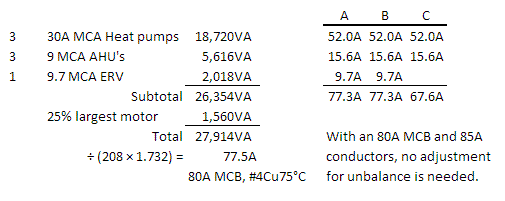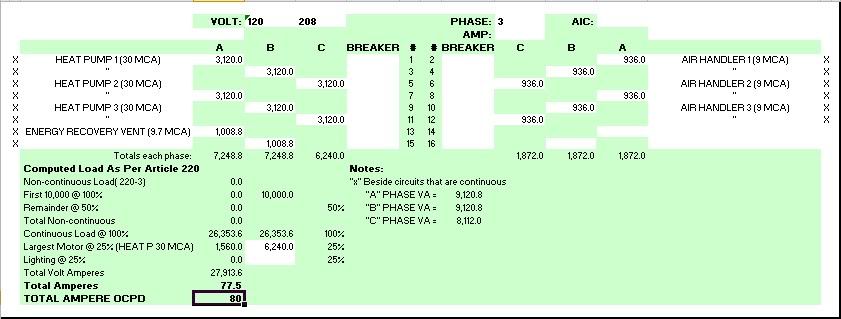tryinghard
Senior Member
- Location
- California
Sure but ironically 430 has no significant change in the feeder size method 430.25, 430.24 ? non that I see anyway.Nothing wrong with using 100% of nameplate MCA if you wish - you will not be too small with your feeder size. Like I said before this is for sizing the branch circuit (an individual load). 440.3 refers you back to 430 for anything not modified by 440. Sizing feeders is not covered in 440 so you have to go back to 430 rules for sizing feeders.
True, I notice using the 29 MCA example with 9 units:Lets say we have nine of the mentioned unit 1 connected to a 208 volt 3 phase source and was balanced across phases?
The more units you have the more that extra 25% of each compressor will add up if using the MCA for feeder and service calculations.
246.4 amps - 1 largest motor at 125%
301.4 amps - MCA method
And with 3 units:
84 amps - 1 largest motor at 125%
100 amps - MCA method



